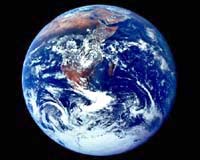
 |
Hospitals in the region were struggling to cope with the flood of casualties amid the desperate search through devastated villages for survivors of Tuesday's quake.
Meanwhile King Mohammed VI was visiting the quake-hit region in order "to be close to his subjects and to follow the rescue operations", the MAP news agency said.
As more aftershocks rippled across the region overnight, thousands of panicked residents chose to spend the night in the open.
The Moroccan geophysics laboratory said an aftershock measuring 4.3 on the Richter scale hit the province at 5:21 am (0521 GMT) Wednesday. Spain's national geographic institute measured the same aftershock at 5.1 points, saying its epicenter was the same as that of Tuesday's deadly tremor.
The latest provisional death toll, released late Tuesday by the Moroccan official MAP news agency, confirmed fears of a high number of casualties from the quake in Al Hoceima province, which includes both Mediterranean ports and remote mountain hamlets.
The main quake, which struck at 2:27 am (0227 GMT) Tuesday, was measured at 6.3 on the Richter scale by French seismologists and was felt as far away as southern Spain.
Search and rescue teams continued to discover more victims as they reached many small villages far up in the mountains.
In Imzouren, some 10 kilometres (six miles) south of Al Hoceima port, an official said the quake had "entirely destroyed" 40 houses as their residents slept.
Cries of "Allah Akbar" (God is Greatest) filled the air in small town with each discovery of a victim buried beneath the debris.
Arguments raged as to whether the lessons of previous quakes in the region had been learned, with some residents blaming poor construction of houses which came crashing down, as happened with the last major temblor 10 years ago.
"Old country houses made of clay cannot stand up to the shock, but neither can many recent buildings because they are not up to standards," said Omar Mussa Abdullah, a member of a regional association for economic development.
But the debate was a futile one for the owners of properties which bore the full brunt of the quake.
"My house is gone. I only thank God that my family is not, for some of my neighbours have lost loved ones," said Omar Eskirati.
"It's God's will," Fatima, a veiled young girl from the hardest-hit part of the town, told AFP, while Ahmed Khattabi expressed anger as he waited for help to arrive.
"Two members of my family are still buried under the debris," he said.
The first burials of victims began Tuesday afternoon near Al Hoceima.
Local officials said hundreds of injured were coming to the port of 100,000 residents, which seemed to have escaped major damage.
Trucks, tents, cars and open spaces were converted into emergency camping spots, as close to half of the city's population opted to sleep outdoors for fear of another quake, a local human rights official, Omar Lamallam, told AFP.
One hospital there was overflowing and the injured were evacuated to a local army barracks and to a charity home.
Armed forces joined the royal gendarmerie, or paramilitary police, and local rescue services in the search, MAP said, adding that helicopters were also flying in large supplies of search and rescue equipment.
Belgium, France, Portugal, Italy and Spain all despatched planes to Morocco carrying emergency workers and clearance equipment.
The United Nations and the International Federation of Red Cross and Red Crescent Societies said they also had teams on standby for immediate departure to help.
Morocco's worst earthquake in modern times occurred in February 1960. At least 12,000 people were killed when an earthquake measuring 6.7 on the Richter scale destroyed the port city of Agadir on the Atlantic coast.
TERRA.WIRE |